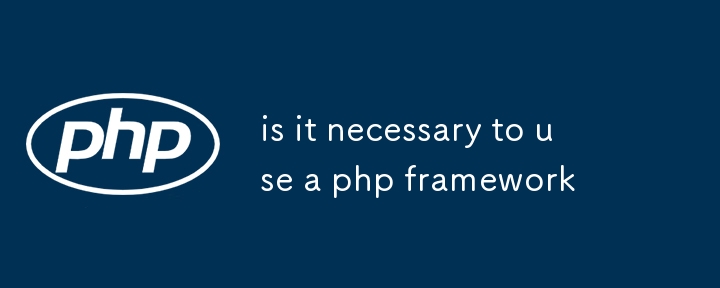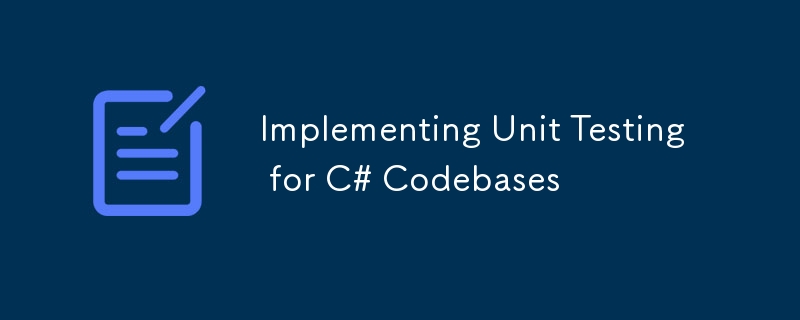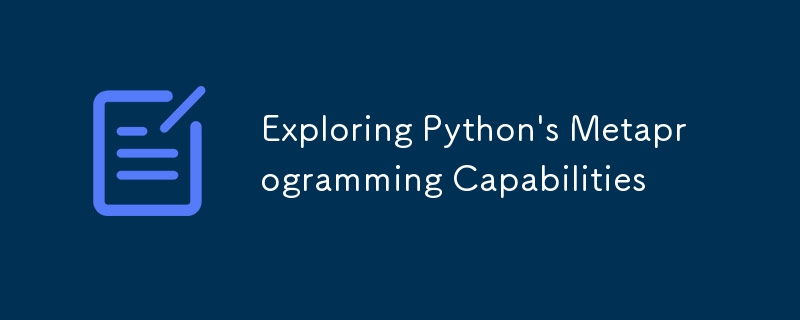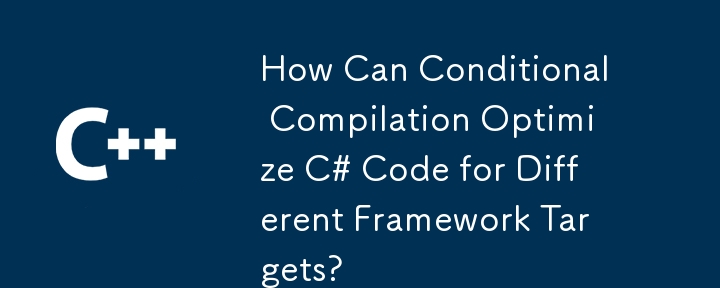Found a total of 10000 related content

The Connection Between H5 and HTML5: Similarities and Differences
Article Introduction:H5 and HTML5 are different concepts: HTML5 is a version of HTML, containing new elements and APIs; H5 is a mobile application development framework based on HTML5. HTML5 parses and renders code through the browser, while H5 applications need to run containers and interact with native code through JavaScript.
2025-04-24
comment 0
940

Use Composer to resolve image uploading issues in Yii2 framework
Article Introduction:I encountered a common but tricky problem when developing an application based on the Yii2 framework: how to handle image uploads efficiently. Users often need to upload pictures of various formats and sizes, and I need to make sure these pictures are processed and stored correctly. After trying multiple methods, I found that the extension library sergks/yii2-image-behavior can solve this problem perfectly.
2025-04-18
comment 0
906

How to Run a Spring Boot Application in Visual Studio Code
Article Introduction:Spring Boot is a powerful framework for building Java-based applications, while Visual Studio Code (VS Code) is a lightweight yet powerful editor for code writing and debugging. Once you've finished coding your Spring Boot project, here's a complete guide on how to successfully run it in VS Code.
Prerequisites
Before you begin, make sure you have the following installed:
Java Development Kit (JDK): version 8 or higher.
Apache Maven or Gradle: Depends on your project build tool.
Spring Boot CLI (optional): for additional Spri
2025-01-16
comment 0
1039

TestCafe: Easier End-to-end Web App Testing with Node.js
Article Introduction:TestCafe: Node.js framework for simplifying automated testing of web applications
Core points:
TestCafe is a web application testing framework based on Node.js, which simplifies the setup and running process of automated tests. It covers all phases of testing, including starting a browser, running a test, collecting results, and generating reports.
TestCafe does not require browser plugins or other dependencies and supports testing in any popular modern desktop or mobile browser. It is also compatible with cloud testing services and unconventional browsers through the plugin ecosystem.
TestCafe offers a variety of test operations, from hover to file upload, and has a built-in automatic waiting mechanism without manually adding waiting or hibernation.
2025-02-17
comment 0
798

is it necessary to use a php framework
Article Introduction:Whether or not the PHP framework is necessary depends on project requirements and development habits. For medium and large projects, using frameworks can improve code quality and save development time because frameworks provide standardized structures (such as MVC mode), built-in common functions (such as database operations, routing, authentication), enhanced security (such as anti-SQL injection), and integrated auxiliary tools (such as cache, queues). 1. The advantages of the framework include: standardizing code structure, improving maintenance, accelerating development speed, enhancing security, and integrating common functions. 2. The situation where the framework is not used is: small or one-time project, high-performance requirements scenarios, and basic skills practice during the learning stage. 3. Use the framework to pay attention to: learning costs are high, flexibility is limited, and performance overhead is present. It is recommended to choose appropriate based on the project size and personal ability.
2025-07-09
comment 0
384

Laravel: Key Features and Advantages Explained
Article Introduction:Laravel is a PHP framework based on MVC architecture, with concise syntax, powerful command line tools, convenient data operation and flexible template engine. 1. Elegant syntax and easy-to-use API make development quick and easy to use. 2. Artisan command line tool simplifies code generation and database management. 3.EloquentORM makes data operation intuitive and simple. 4. The Blade template engine supports advanced view logic.
2025-04-19
comment 0
995

Yii: The Rapid Development Framework
Article Introduction:Yii is a high-performance framework based on PHP, suitable for rapid development of web applications. 1) It adopts MVC architecture and component design to simplify the development process. 2) Yii provides rich functions, such as ActiveRecord, RESTfulAPI, etc., which supports high concurrency and expansion. 3) Using Gii tools can quickly generate CRUD code and improve development efficiency. 4) During debugging, you can check configuration files, use debugging tools and view logs. 5) Performance optimization suggestions include using cache, optimizing database queries and maintaining code readability.
2025-04-14
comment 0
604

Implementing Unit Testing for C# Codebases
Article Introduction:Unit testing is an important means to ensure code quality in C# projects and must be implemented. 1. Select the appropriate testing framework: such as xUnit, NUnit or MSTest, and decide based on team habits or project needs; 2. Reasonably organize the test code: establish a test structure according to the main project structure image, and each test method only tests one behavior, keep it concise and clear; 3. Use the Mock framework to isolate dependencies: such as Moq or NSubstitute, simulate external dependencies to ensure test independence; 4. Automatically run tests and integrate CI/CD: configure automatic testing in GitHubActions and other processes to prevent error merging, and can be set to run automatically during local development.
2025-07-10
comment 0
674

What is the purpose of Gii in Yii?
Article Introduction:Gii is a powerful code generation tool in the Yii framework, which accelerates the development process by generating boilerplate code based on database structure or input parameters. Specifically, Gii can generate ActiveRecord models, create controllers containing CRUD operations, build corresponding views, and help build components such as modules and forms. To enable Gii, add 'gii' to the 'bootstrap' array in the configuration file config/web.php, and configure its class and access restricted IP in the 'modules' section. Gii helps keep code consistency and conforms to Yii best practices and is suitable for quickly building data-intensive applications such as CMS or management panels. Although the generated code is a skeleton,
2025-07-15
comment 0
352

Validating HTML5 markup using online tools and validators.
Article Introduction:The steps to verify HTML5 code normativeness include using tools such as W3CMarkupValidationService to check. 1. Open the W3C validator and enter the web page URL or paste the source code; 2. Click the "Check" button to start verification; 3. Check the error and warning content in the report and repair it item by item; 4. Based on the actual situation, determine whether to handle non-fatal errors; 5. Upload HTML files for verification during local development. Common errors include unclosed labels, discarded labels, unquoted attribute values, irregular custom attributes, and element nesting errors, which can be modified one by one according to the prompts.
2025-07-06
comment 0
909

vs : which one to use?
Article Introduction:Selecting a code editor should be determined based on project requirements, flexibility, and workflow. If you need lightweight editing, such as fast scripts or small projects, you should choose VSCode because it has fast startup, wide language support and concise functions. If you develop large applications, such as .NET, Java, or C projects, you should choose a full-featured IDE, such as VisualStudio or IntelliJIDEA because it has deep framework integration and advanced debugging capabilities. In addition, VSCode has obvious advantages in customization and remote development, and is suitable for developers who need extended functions or multi-environment collaboration. Ultimately, tool selection should be based on specific projects and habits. VSCode is suitable for most modern development tasks, while professional IDE is better in specific scenarios.
2025-07-19
comment 0
466

What are the key features and benefits of using ASP.NET Core for building web applications with C#?
Article Introduction:ASP.NETCore is a cross-platform, high-performance framework launched by Microsoft, designed for the development of modern web applications in C#. Its core advantages include: 1. Cross-platform support, which can run on Windows, macOS and Linux, and is compatible with Docker and cloud-native architectures; 2. Modular architecture, which improves performance and flexibility through middleware pipeline loading functions; 3. Built-in dependency injection (DI), supports lifecycle management, and enhances code maintainability and testability; 4. High performance performance, based on Kestrel server, can efficiently handle high concurrent requests under default configuration, suitable for scenarios with limited resources or high response speed requirements.
2025-06-24
comment 0
540

How to Test Your JavaScript with Selenium WebDriver and Mocha
Article Introduction:Core points
Mocha.js is a feature-rich JavaScript testing framework based on Node.js, which can be used to write JavaScript functional tests in combination with Selenium WebDriver 3 and NodeJS. This requires familiarity with the basics of NodeJS and JavaScript programming languages.
Mocha provides an API for building test code into test suites and test case modules to enable execution and report generation. It supports test suite setup and teardown functions, as well as test case setup and teardown functions.
Selenium WebDriver is a control W
2025-02-16
comment 0
616

Creating a Visualization App Using the Google Charts API and AngularJS
Article Introduction:Core points
AngularJS, Google's popular JavaScript framework, can be used to build dynamic visual applications that leverage the Google Charts API. Angular's two-way binding feature allows charts to change dynamically based on data and user input.
Creating a visual application with AngularJS involves several steps, such as setting up Angular, building an application, and creating a chart. This process requires writing code in HTML and JavaScript, using Angular's MVC design pattern, and integrating the Google Charts API for visualization.
The Google Charts API provides various graphs
2025-02-22
comment 0
935

How to write a custom linter for Go code?
Article Introduction:To write a custom Go code linter, the key is to use Go toolchain and AST analysis to implement code specification checks. 1. Determine the inspection target, such as prohibiting specific function calls, field tag checking, naming methods or repeated string constants, and analyze the corresponding AST nodes based on this; 2. Use go/analysis to build a framework, define the Analyzer structure, and traverse the AST nodes in the run function, and use inspect.Inspect and pass.Reportf to implement detection and reporting; 3. Write tests and local debugging, perform assertion verification through the testdata directory and analysistest package, and compile it into a command line tool for debugging and integration; 4.
2025-07-17
comment 0
529

Exploring Python's Metaprogramming Capabilities
Article Introduction:The core methods of Python metaprogramming include: 1. Use type to dynamically create classes; 2. Control the class creation process through metaclasses; 3. Use decorators to modify functions or class behavior; 4. Dynamically modify object functions at runtime. These mechanisms allow developers to dynamically generate or modify code structures at runtime. For example, type can construct classes based on parameters, metaclasses can be used for interface consistency verification or automatically register subclasses, decorators are widely used in property encapsulation or framework routing management, while monkey patches support temporary enhancement class functionality, suitable for testing mocks or emergency fixes, but abuse should be avoided to maintain code maintainability.
2025-07-18
comment 0
415

Bootstrap and Web Design: Best Practices and Techniques
Article Introduction:Bootstrap is an open source front-end framework developed by Twitter, suitable for building responsive websites quickly. 1) Its grid system is based on a 12-column structure, allowing for the creation of flexible layouts. 2) Responsive design function enables the website to adapt to different devices. 3) The basic usage includes building a navigation bar, and the advanced usage involves card components. 4) Common errors such as misuse of grid systems can be avoided by correctly setting the column width. 5) Performance optimization includes loading only necessary components, using CDN and file compression. 6) Best practices emphasize tidy code, custom styles and responsive design.
2025-04-29
comment 0
370

Go Dependency Injection Frameworks and Manual Wiring
Article Introduction:Dependency injection in Go can be implemented through frameworks or manual wiring. Common frameworks include Wire (code generated during compilation, good performance), Dagger (similar to Wire but not popular), Fx (based on reflection, suitable for large services), and Dig (light and flexible); the advantages of manual method are simple and intuitive, fast compilation, and easy to debug, and the disadvantages are complex construction and error-prone when the project is large; the selection basis includes project size (small projects are simpler manually), team experience (familiar with DI available frameworks), performance requirements (Wire is more suitable for high concurrency), and testability requirements (framework is more conducive to mock testing).
2025-07-16
comment 0
292



















